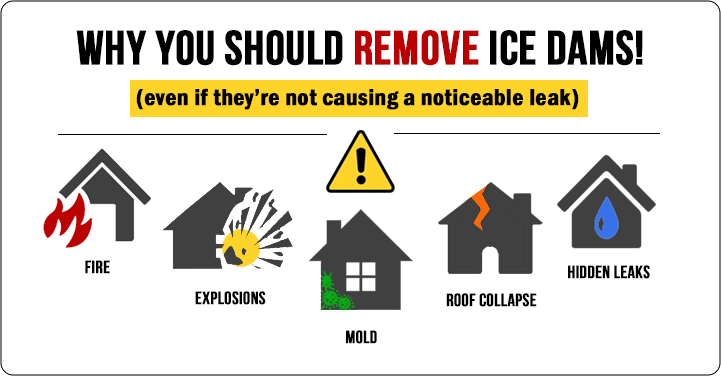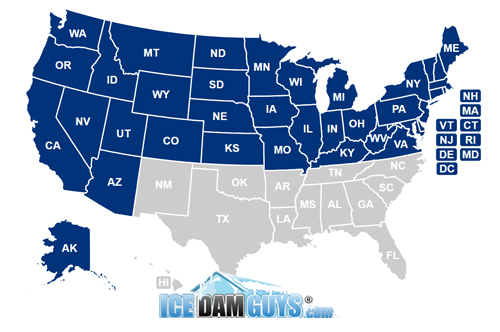How to Forecast (and Prevent) Ice Dams
Plenty of homeowners know they’re looking at an ice dam when they see tons of ice on their roof (literally). Oftentimes these ice dams are littered with a string of long dazzling icicles. But how do you know when you’re about to get an ice dam?

Obviously, there’s always a chance that ice dams will form on your roof during a long Minnesota winter. But you’ll also get some warning signs when an ice dam goes from a possibility to an extreme likelihood.
Here are some warning signs that tell you ice dams may be looming in your not-so-distant future—and that it’s time to ramp up your ice dam prevention measures (like roof-raking):
- Lots of snow (kind of an obvious one).
Early snow; if it starts snowing around late November to early December, the chances are very high that you’ll be dealing with ice dams this season (especially if your home has been particularly prone to ice dams in the past).
- Heavy, wet snow. Ice dams can form when you have a poorly insulated attic that melts the snow on your roof, which then refreezes into ice. Heavy/wet snow is already partway there: it’s partly melted the second it lands on your roof, so as soon as the temperature dips below freezing, it becomes ice. Wet snow also does a much better job of clogging your ridge and roof vents (thus holding more heat inside your attic space) – Not good!
- Temperatures that fluctuate around freezing for several days. Again, any time snow can melt and refreeze, an ice dam is more likely to form. The risk of ice dam formation is especially high when daytime highs are above freezing and nighttime lows are below freezing. The snow slowly melts all day and then slowly freezes throughout the night as the temperatures dip down below freezing.
- MAJOR warning sign: Clogged roof vents. This means the air in your attic isn’t circulating properly (or at all). Think about it: it’s wintertime and you have the heat cranked up. Heat rises throughout your house and eventually ends up in the attic. But if the vents are clogged, where can the heat go? Nowhere. It creates a hot roof deck that melts snow, which refreezes, which finally becomes an ice dam (or even worse yet—multiple ice dams).
Any time one or more of the above happens, take a look at your roof. If there’s snow, clear it off with a roof rake, or hire a roof snow removal service. If ice dams form, get ‘em while they’re small: call an ice dam removal service before they cause leaking in your home.






















No comments yet. You should be kind and add one!
Leave a Comment